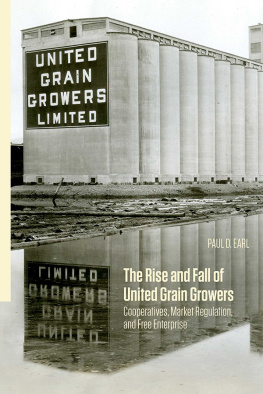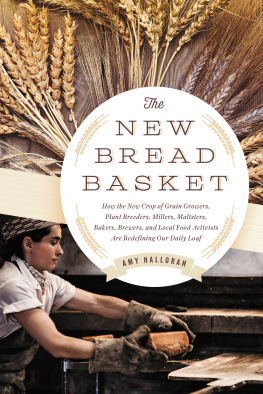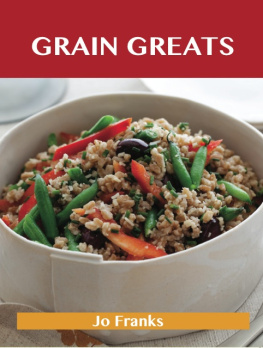The Rise and Fall of United Grain Growers
Cooperatives, Market Regulation, and Free Enterprise
Paul D. Earl
The Rise and Fall of United Grain Growers: Cooperatives, Market Regulation, and Free Enterprise
Paul D. Earl 2019
23 22 21 20 19 1 2 3 4 5
All rights reserved. No part of this publication may be reproduced or transmitted in any form or by any means, or stored in a database and retrieval system in Canada, without the prior written permission of the publisher, or, in the case of photocopying or any other reprographic copying, a licence from Access Copyright, www.accesscopyright.ca, 1-800-893-5777.
University of Manitoba Press
Winnipeg, Manitoba, Canada
Treaty 1 Territory
uofmpress.ca
Cataloguing data available from Library and Archives Canada
ISBN 978-0-88755-844-3 (paper) ISBN 978-0-88755-592-3 (pdf) ISBN 978-0-88755-590-9 (epub)
Cover design by Marvin Harder
Interior design by Karen Armstrong
Cover image: UGGs Vancouver Terminal, 1936. UGG fonds, University of Manitoba Archives.
Printed in Canada
The University of Manitoba Press acknowledges the financial support for its publication program provided by the Government of Canada through the Canada Book Fund, the Canada Council for the Arts, the Manitoba Department of Sport, Culture, and Heritage, the Manitoba Arts Council, and the Manitoba Book Publishing Tax Credit.
Contents
Stooks, n.d. University of Manitoba Archives, United Grain Growers (UGG) fonds, PC 83 Box 2, Fl.25, no.1.
Preface
This book has been a long time in preparation. It began in 2004 when I was approached by Ted Allen, who was the president and chair of the board of Agricore United, about writing a history of the Company. and I started to work.
I began by interviewing a number of people in the grain businesssome active, some retiredto get a broad perspective on the many changes that had occurred in the industry over the previous decade. Then, two years later, the Company received a takeover bid from Saskatchewan Wheat Pool, and on 7 June 2007 the Company passed into the Saskatchewan companys hands.
The sale to the Pool was much more momentous than simply the demise of Agricore United. The Company was one of four large grain cooperatives (the other three being Alberta Wheat Pool, Saskatchewan Wheat Pool, and Manitoba Pool Elevators) that, for much of the twentieth century, dominated the industry. By 2006, only two of these organizations remained: Agricore United and Saskatchewan Wheat Pool. Of these two, only the first remained farmer-controlled. The sale of Agricore United therefore also marked the end of a century of voluntary farmer control in the grain industry.
The four co-ops had had a long interwoven history. The Company itself was the first of the four to be formed, and on 27 January 1906 the Grain Growers Grain Company was born. The other threethe provincial Wheat Poolswere created in the 1920s and became the Companys strongest competitors. The Pools confined their activities to their respective provinces, and the Company competed with all three. By the mid-1970s, the four companies handled the majority of the farmers grain and were the most influential voices in shaping government grain policies. However, their dominance was not to last.
Their decline began in the 1990s, a time of dramatic change. First, the country elevator system underwent a massive consolidation and modernization. This process required the raising of large amounts of capital and put all four of the companies under significant financial stress, which only the Company and Saskatchewan Wheat Pool survived. Then, after the sale of the Company, only Saskatchewan Wheat Pool remained in operation, but it had by this time converted to a publicly held company with a fully shareholder-controlled board.
The rise and fall of the four cooperatives coincided with a 360-degree transformation of the industry from one that operated almost fully within the private sector in the early 1900s, to one that came largely under cooperative and state control by mid-century, and then reverted to one dominated by the private sector by the early 2000s. Each of these institutional arrangements had its very impassioned defenders and opponents. Those who favoured free enterprise believed that the industry should be governed by market forces and be subject to a minimum of regulation. Those who favoured management by state and cooperative organizations wanted market forces to be tempered by regulation and centralized control. Over the century of farmer control, the industry was consumed by a debate between these two competing ideologies.
With the demise of Agricore United, the theme of the book then changed. The original task, as I saw it, was to document how a small cooperative enterprise created in 1906 had successfully overcome a series of challenges through the twentieth century and had emerged at the start of the twenty-first as the largest grain company in western Canada. After the sale to the Pool, the objectives of the study expanded to include two additional components: first, to explain how the large and successful Company had been taken over by one that was smaller and only recently had emerged from near bankruptcy; second, to account for why the large and dominant cooperative sector of the industry had disappeared. In short, what was needed was not only a history of the Company itself but also a history of the industry: how and why all four of the large grain cooperatives came into existence, how they changed over time, and how they participated in the ongoing debate between the two competing ideologies. Why and how had the ideological dispute arisen, and how and why had each, turn and turn about, predominated within the industry? Both the physical shape of the industry and its institutions demanded explication.
Although the two new objectives expanded the scope of the project, accounting for the demise of the Company itself presented the greater challenge, primarily because the Company did not mount a serious defence against the takeover, and, as the analysis in Part 3 suggests, it is not inconceivable that, had it done so, the takeover attempt might have failed, and the Company might have remained in operation as an independent enterprise. It was this failure to oppose the takeover with any vigour that posed the most puzzling question in the research. The Company had successfully faced many threats to its survival over its lifetime. Why had it not survived this one?
Where my first set of interviews had examined how the changes of the 1990s had unfolded, unravelling the mystery of the Companys demise demanded a more focused approach. Accordingly, I immediately began a further set of interviews, this time concentrating on officials within the Companyboth board members and managementto examine how this unexpected event had occurred. Overall, I interviewed about fifty people for this book, including those with whom I spoke before the takeover. Of these, twenty were either with the Company through the time of the takeover or had been with the Company shortly before the takeover occurred. I had more than one communication with at least half of this group in the form of either direct conversations, or email exchanges, or both. Altogether, I had approximately thirty to forty conversations with these twenty people on how the takeover process had unfolded and on what basis the decisions had been made.











